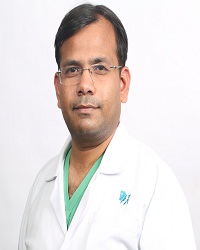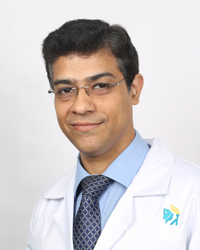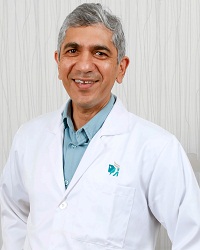Search Result: 22

Dr Anoop Bandil
MBBS, DNB
Registration No
844950
Language
English, हिंदी

9 years experience overall

Sarita Vihar , Delhi
MON, FRI | TUE- THU, SAT(12:00 PM-03:00 PM | 10:00 AM-03:00 PM)

Dr Ashish Dewan
MBBS MAMC MS MCh
Registration No
5350328
Language
English, हिंदी

23 years experience overall

Nehru Enclave , Delhi
MON, WED- FRI(12:00 PM-02:00 PM)

Dr Ashwani Maichand
MBBS/MS/MCH(Ortho)
Registration No
1886938
Language
English, हिंदी, ਪੰਜਾਬੀ

21 years experience overall

Karol Bagh , Delhi
WED, SAT(09:00 AM-11:30 AM)

Dr Chander Shekar
MBBS, MS
Registration No
534304
Language
English, हिंदी

30 years experience overall

Sarita Vihar , Delhi
WED, FRI | THU, SAT | TUE | MON(10:00 AM-12:00 PM | 12:00 PM-04:00 PM | 04:00 PM-05:00 PM | 12:00 PM-02:00 PM)

Dr D K Das
MS(Ortho),M.Ch(Ortho),FIJRS (U.K.),FIJRS(Germany)
Registration No
2187618
Language
English, हिंदी

16 years experience overall

Nehru Enclave , Delhi
MON, WED, FRI(10:00 AM-12:00 PM)

Dr Harsh Bhargava
MBBS, MS, Spine Fellow Germany Korea
Registration No
387
Language
English, हिंदी

32 years experience overall

Sarita Vihar , Delhi
MON, THU, SAT | TUE, WED, FRI | MON, THU(02:00 PM-04:30 PM | 09:30 AM-02:00 PM | 02:00 PM-04:00 PM)

Dr Havind Tandon
MBBS; MS
Registration No
492147
Language
English, हिंदी

20 years experience overall

Sarita Vihar , Delhi
MON, TUE, THU, FRI | WED, SAT(12:00 PM-04:00 PM | 10:00 AM-12:00 PM)

Dr Hitesh Dawar
MBBS DNB
Registration No
6341927
Language
English

12 years experience overall

Nehru Enclave , Delhi
TUE, THU, SAT(06:00 PM-08:00 PM)

Dr Kulbhushan Attri
MBBS, MS, D-Orth, MCh (Liverpool, UK)
Registration No
384
Language
English, हिंदी

32 years experience overall

Sarita Vihar , Delhi
MON | WED | THU, SAT | TUE, FRI(10:00 AM-02:00 PM | 04:00 PM-05:00 PM | 10:00 AM-12:00 PM | 02:00 PM-04:00 PM)

Dr M N Sehar
MBBS, MS, Dip.Orth, FRCS, FRCS Orth (UK)
Registration No
362
Language
English

28 years experience overall

Sarita Vihar , Delhi
WED, FRI | THU, SAT | MON, TUE(12:00 PM-04:00 PM | 04:00 PM-05:00 PM | 10:00 AM-12:00 PM)

Dr Masood Habib
M.S.(ORTHO),MRCSEd,FEBOT,FRCS(Trauma & Orth)
Registration No
5474733
Language
English, हिंदी

12 years experience overall

Sarita Vihar , Delhi
MON, WED | FRI, SAT | TUE | MON, TUE | WED(04:00 PM-07:00 PM | 12:00 PM-04:00 PM | 08:00 AM-12:00 PM | 10:00 AM-12:00 PM | 02:00 PM-04:00 PM)

Dr Prof Amit Kumar Agarwal
MBBS, MS (Orth) PGI, DNB (Orth), MCh (Orth) USAIM, MCh (Orth) UK, MNAMS, MIMSA, Dip.SICOT (Belgium)
Registration No
484449
Language
English, हिंदी, தமிழ்

17 years experience overall

Sarita Vihar , Delhi
MON, TUE | WED | THU, FRI | SAT(11:00 AM-03:00 PM | 09:00 AM-01:00 PM | 11:00 AM-03:00 PM | 09:00 AM-09:30 AM, 12:00 PM-01:00 PM)

Dr Prof Rajesh Malhotra
M.B.B.S (AIIMS, New Delhi) FACS, FICS, FIMSA, FNAMS, FNASC (Princess Alexandra Hospital, Brisbane) M.S Orthopedics (AIIMS, New Delhi) F.R.C.S (Glasgow) Fellowship in Joint Replacement and Bone Banking (HSS Lennox Hill Hospital, New York) A.O Trauma and Reconstructive Fellow Indo-British Travelling Senior Fellow (UK) Ranawat Orthopedic Foundation Fellow (Universitätklinik Ulm, Germany) J&J and Robert Roaf Fellow (India)
Registration No
5370267
Language
English, हिंदी

34 years experience overall

Sarita Vihar , Delhi
MON- THU | FRI, SAT(12:00 PM-04:00 PM | 10:00 AM-12:00 PM)

Dr Prof Raju Vaishya
MBBS 1982, Jiwaji University, Gwalior, India. MS (Orth) 1986, Jiwaji University, Gwalior, India. MCh (Orth) 1990, Liverpool University, England. FRCS (London) 2012, Royal College of Surgeons of England FACS (USA) 2020, American College of Surgeons PG DHA 2012, Apollo Med Varsity, India
Registration No
389
Language
English, हिंदी

37 years experience overall

Sarita Vihar , Delhi
MON, WED, THU, SAT(10:00 AM-01:00 PM)

Dr Ramani Narasimhan
Fellow - Pediatric Orthopaedic Surgery, MS(Orthopaedic Surgery), MBBS
Registration No
398
Language
English, हिंदी

28 years experience overall

Sarita Vihar , Delhi
MON, TUE, THU- SAT(01:00 PM-01:30 PM)

Dr Shrish Dutt Mishra
MBBS,DO, DNB
Registration No
5526382
Language
English, हिंदी

27 years experience overall

Nehru Enclave , Delhi
MON, WED, FRI(05:00 PM-07:00 PM)

Dr Vibhu Bahl
MBBS, M.S(Ortho)
Registration No
1096444
Language
English, हिंदी

17 years experience overall

Sarita Vihar , Delhi
TUE | WED | THU | SAT(12:00 PM-04:00 PM | 10:00 AM-12:00 PM | 12:00 PM-03:00 PM | 10:00 AM-12:00 PM)

Dr Vinod Sukhija
MBBS, MS, MCh
Registration No
492167
Language
English, हिंदी

35 years experience overall

Sarita Vihar , Delhi
MON- SAT(11:00 AM-02:00 PM)

Dr Vipul Vijay
MBBS, MS, DNB, Dip SICOT, MNAMS
Registration No
787906
Language
English, हिंदी

9 years experience overall

Sarita Vihar , Delhi
MON, FRI(10:00 AM-12:00 PM)

Dr Yash Gulati
MS, Dip Sports Medicine (Dublin), MCh (Orth) England
Registration No
538576
Language
English, हिंदी

32 years experience overall

Sarita Vihar , Delhi
TUE, WED, FRI, SAT(10:00 AM-01:00 PM)

Dr Yashwanth Singh Tanwar
MBBS, MS(Ortho) , DNB(Ortho)
Registration No
678176
Language
English, हिंदी

6 years experience overall

Sarita Vihar , Delhi
WED, SAT | MON, THU | TUE, FRI(12:00 PM-04:00 PM | 04:00 PM-05:00 PM | 10:00 AM-12:00 PM)

Dr Yatinder Kharbanda
MBBS, MS, Dip.Orth, DNB
Registration No
391
Language
English, हिंदी

30 years experience overall

Sarita Vihar , Delhi
MON- SAT(11:00 AM-11:15 AM)
Frequently Asked Questions for Osteotomy in Delhi
Several types of hip osteotomies are performed depending on the specific condition being treated. Some common types include periacetabular osteotomy (PAO) for hip dysplasia, femoral head osteotomy for avascular necrosis, and intertrochanteric osteotomy for certain fractures or deformities.
It is very tough to reverse a lateral osteotomy, especially since it can cause a flat top nose. However, your orthopaedic surgeon would ultimately make this decision based on individual circumstances and factors contributing to the need for reversal.
Yes, you can bend your knee after an osteotomy. However, your ability to fully bend or straighten your knee may be temporarily restricted during the initial recovery period. Physical therapy will help regain full range of motion over time.
A chevron osteotomy is a specific type of osteotomy performed on the foot to correct deformities such as bunions. It involves cutting a V-shaped wedge from the bone and realigning it to improve joint function and alleviate pain.
The eligibility criteria for osteotomy surgery depend on the individual’s overall health, the severity of the condition, and factors such as age and lifestyle. Your orthopaedic surgeon will assess your case to determine if you are suitable for the procedure.
Like any surgical procedure, osteotomy surgery carries some risks and potential side effects. These may include infection, blood clots, nerve damage, and limited range of motion. However, with proper surgical technique and post-operative care, serious complications are rare.
After osteotomy surgery, following your doctor’s instructions for proper wound care, pain management, medication usage, and physical therapy is crucial. Regular appointments will be scheduled to follow up, monitor your progress and make any necessary adjustments to the treatment plan.
The duration of osteotomy surgery depends on the complexity of the procedure and the specific bone being operated on. On average, it may take a few hours to complete the surgery.
The recovery time for osteotomy surgery depends on the type of procedure, the patient’s overall health, and adherence to post-operative care instructions. On average, it may take several weeks to a few months for complete recovery.
Before osteotomy surgery, your doctor will conduct a thorough evaluation, including physical examination, imaging tests, and blood work. You may be asked to stop certain medications or follow specific dietary guidelines prior to the surgery.
While the success rate of osteotomy surgery depends on the condition being treated and individual factors, it is generally reasonable. Most patients experience improved pain relief, joint function, and quality of life.
An orthopaedic surgeon specializing in treating musculoskeletal conditions performs osteotomy surgery. They have extensive knowledge and experience in operating on bones and joints.
There are various types of osteotomy surgery depending on the bone’s location and the procedure’s purpose. Some common types include high tibial osteotomy (HTO), distal femoral osteotomy (DFO), and hip osteotomy.
Osteotomy surgery is a procedure that involves cutting the bone and sometimes adding bone tissue to realign or reshape it in order to correct deformities or redistribute weight in the joints. It is commonly performed in conditions like arthritis, avascular necrosis, hip dysplasia, partial or full hip dislocation, Legg-Calve-Perthes disease, or hip instability.
Related Procedures in Delhi
- Doctors for Total Knee Replacement in Delhi
- Doctors for Hip Replacement in Delhi
- Doctors for ACL reconstruction surgery in Delhi
- Doctors for Laminectomy in Delhi
- Doctors for Arthrodesis in Delhi
- Doctors for Osteotomy in Delhi
- Doctors for Rotator cuff Tendinitis in Delhi
- Doctors for Knee Replacement Surgery in Delhi
- Doctors for Limb lengthening in Delhi
- Doctors for Ankle surgery in Delhi
Related Treatments in Delhi
- Doctors for ACL Injuries Treatment in Delhi
- Doctors for Arthritis Treatment in Delhi
- Doctors for Carpal Tunnel Syndrome Treatment in Delhi
- Doctors for Cerebral Palsy Treatment in Delhi
- Doctors for Ganglion Cyst Treatment in Delhi
- Doctors for Hemophilia Treatment in Delhi
- Doctors for Marfan Syndrome Treatment in Delhi
- Doctors for Muscular Dystrophy Treatment in Delhi
- Doctors for Psoriatic Arthritis Treatment in Delhi
- Doctors for Rheumatoid Arthritis Treatment in Delhi
- Doctors for Scleroderma Treatment in Delhi
- Doctors for Scoliosis Treatment in Delhi
- Doctors for Spina Bifida Treatment in Delhi
- Doctors for Spondylolisthesis Treatment in Delhi
- Doctors for Trigger Finger Treatment in Delhi
Other Specialities in Delhi
- Best Urologist in Delhi
- Best Pulmonologist in Delhi
- Best General Physician in Delhi
- Best Endocrinologist in Delhi
- Best Cardiologist in Delhi
- Best Oncologist in Delhi
- Best Radiologist in Delhi
- Best Orthopedics in Delhi
- Best Hepatologist in Delhi
- Best Gynecologist in Delhi
- Best Dermatologist in Delhi
- Best Gastroenterologist in Delhi
- Best Psychologist in Delhi
- Best Ent Specialist in Delhi
- Best Nephrologist in Delhi
- Best Rheumatologist in Delhi
- Best Diabetologist in Delhi
- Best Psychiatrist in Delhi
- Best Neonatologist in Delhi
- Best Dentist in Delhi
- Best Dietitian in Delhi
- Best Haematologist in Delhi
- Best Pediatrics in Delhi
- Best General Surgeon in Delhi
Top Hospitals in India
- Hospitals in Ahmedabad
- Hospitals in Bangalore
- Hospitals in Bhubaneswar
- Hospitals in Bilaspur
- Hospitals in Chennai
- Hospitals in Delhi
- Hospitals in Guwahati
- Hospitals in Hyderabad
- Hospitals in Indore
- Hospitals in Kolkata
- Hospitals in Madurai
- Hospitals in Mumbai
- Hospitals in Mysore
- Hospitals in Nashik
- Hospitals in Noida
- Hospitals in Visakhapatnam
- Hospitals in Lucknow
- Hospitals in Bhopal
- Hospitals in Karur
- Hospitals in Kochi
- Hospitals in Nellore
- Hospitals in Trichy
- Hospitals in Kakinada
© Copyright 2024. Apollo Hospitals Group. All Rights Reserved.
 +91 8069991061
Book Appointment
+91 8069991061
Book Appointment






 Call Now
Call Now


















